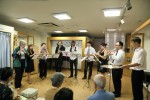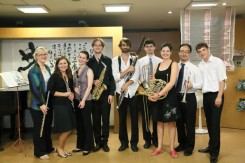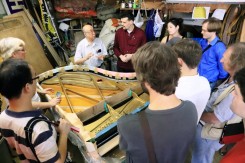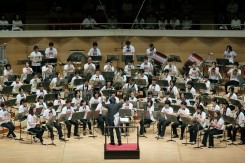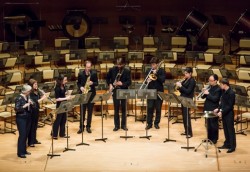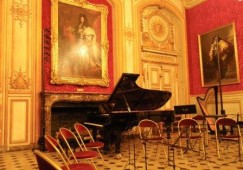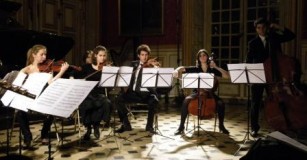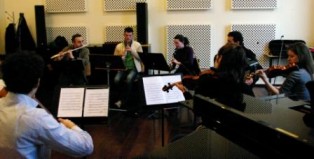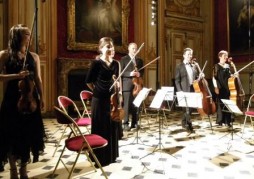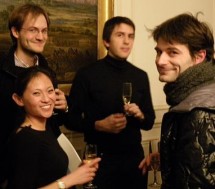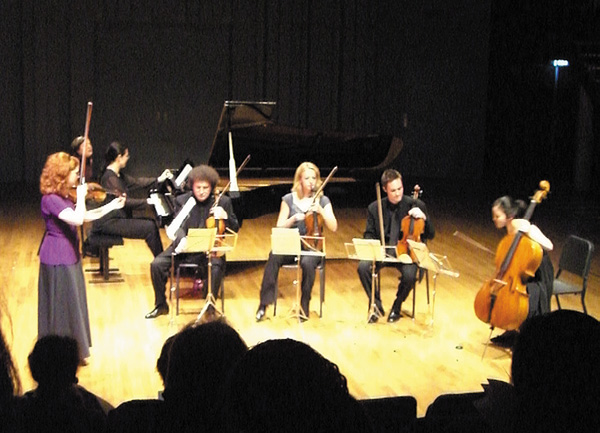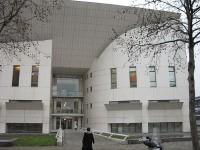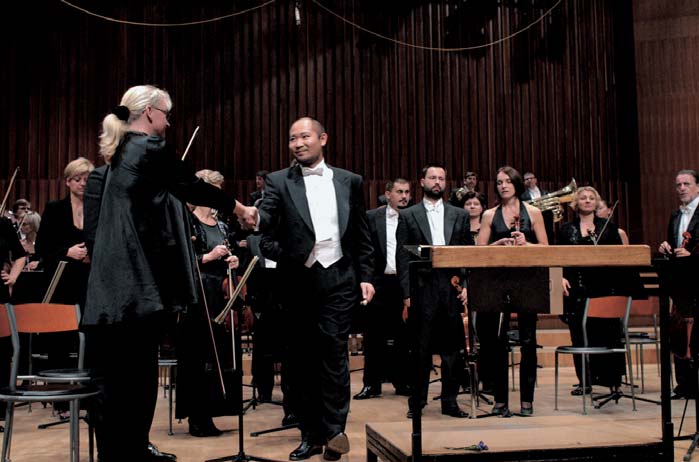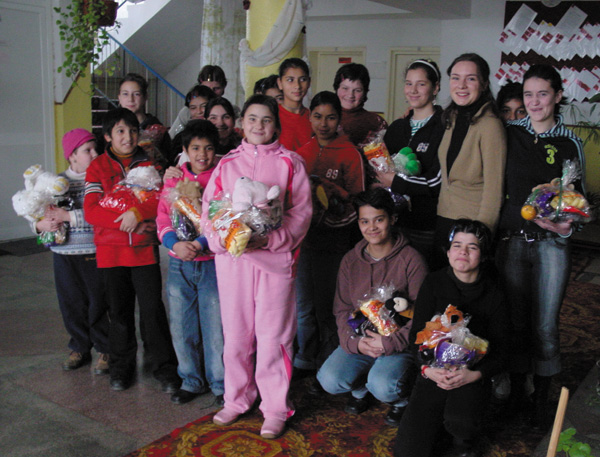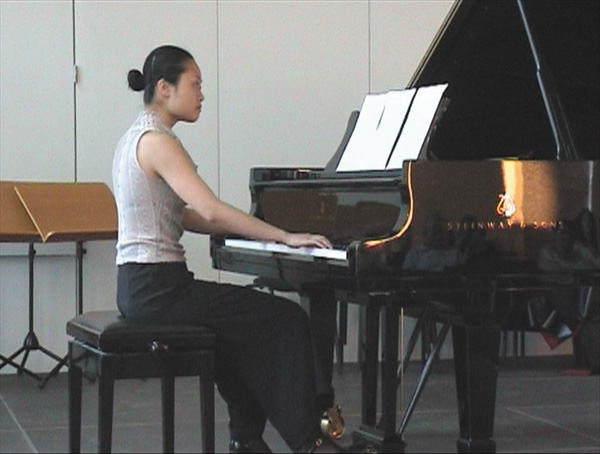Last April, when I first heard about the Tokyo Foundation’s project, Together in Tohoku Workshops and Concert, I was immediately interested. I had never been to Japan, and the simple thought of making the trip was most exciting. When I learned of the project’s scale, I was even more eager to participate, for such a combined artistic and humanitarian initiative resonates profoundly with my own vision of the artist’s role in society as a citizen-musician.
A year and a half ago, when I saw the tragic events experienced by the inhabitants of the Tohoku region, I felt extremely sad and helpless by the enormity of it all. I was frustrated not to be able to help and could only observe the horror unfold on my television screen. I saw a nation deploy all its energy and courage to try to save its citizens. The Sylff project in Tohoku, in which I was lucky enough to participate, provided me with an opportunity to act and contribute—at my own level—in playing a small part in rebuilding the devastated region.
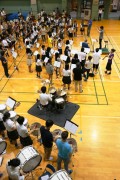 From what I observed, working with 18 saxophonists within an overall group of a hundred musicians aged 13 to 22, I felt that the orientation of the Japanese students was significantly different from that of the French. The Japanese have very good ensemble techniques and excellent orchestral practice habits. My contribution was needed in the area of individual technique. The reverse would have been true in France. This can probably be explained by the difference between the two music education systems. The students had a wonderful spirit, and showed a great thirst to learn.
From what I observed, working with 18 saxophonists within an overall group of a hundred musicians aged 13 to 22, I felt that the orientation of the Japanese students was significantly different from that of the French. The Japanese have very good ensemble techniques and excellent orchestral practice habits. My contribution was needed in the area of individual technique. The reverse would have been true in France. This can probably be explained by the difference between the two music education systems. The students had a wonderful spirit, and showed a great thirst to learn.
At the beginning of the week, I found my group very reserved and shy. But this didn’t last long! In the end, each one showed himself to be extremely open-minded and determined. At first, we “coaches” felt hindered by our ignorance of Japanese and by the paucity of translators and interpreters, but this soon gave way, and the magic of music’s universality allowed us to give several private lessons. Personally, I found the challenge of questioning my own teaching methods and ways of communing particularly rewarding. On the last day, to my great surprise, during the small reception given after the special concert in Suntory Hall, I realized that many of the students actually spoke a little English but had not dared say a word! 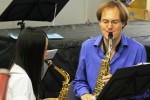
The experience of working with these young people, victims of the tragedy, was a profoundly moving and exciting one for me. Behind their apparent timidity, I met sensitive, generous, and thoughtful human beings. In fact, I discovered an entire culture during my week in Japan.
Visiting Ishinomaki was a highlight. Seeing this devastated city was a real shock. So many empty spaces in the middle of the city, formerly occupied by houses and buildings, in which grass was growing back; the numerous houses whose ground floors had been destroyed; the school whose blackened walls were destroyed by fire after being covered by the sea; and the incongruous everyday objects still dotting the landscape: They all bore testimony to the ravages of the tragedy.
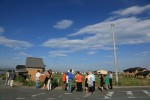 The concert we performed in this city was both sad and inspiring, coming as it did following our tour of the city by bus. We saw members of the public, often with tears in their eyes, listening to us perform in a community center which had doubtless been used as a shelter. I hope we were able to transmit our sense of hope and caring.
The concert we performed in this city was both sad and inspiring, coming as it did following our tour of the city by bus. We saw members of the public, often with tears in their eyes, listening to us perform in a community center which had doubtless been used as a shelter. I hope we were able to transmit our sense of hope and caring.
The week in Japan also allowed me to meet Sylff fellows from Paris, New York, and Vienna and to share an experience of living in communion with people I did not know but with whom I shared common interests. I loved meeting the Sylff coordinators—such caring people—and all the extraordinary volunteers involved, including the translators and musicians. I really hope to stay in touch with the people involved in the project.
Following our Suntory Hall concert, David Panzl and I started developing a joint chamber project which should lead to further concerts in Europe. Thanks to Facebook, we have also been able to share pictures and to stay in touch with many of the students.
In the end, I believe I learned at least as much as the students we were there to coach. This experience has made a profound impact on me, and I think how lucky I was to be a part of it. I’d be delighted to participate in similar projects in the future! As students, we often travel—sometimes long distances—to reach teachers in academies or music courses. Here, it was the opposite, with “coaches” from different countries coming together to work with a group of students, to share know-how, and make music together. The presence of outstanding musical personalities, such as Keiko Abe, was also important. The precious moments we shared, in which the concept of distance become relative, struck me as being truly original. This collaboration between cultures will be, I hope, a precursor of future ones.
I would like to express my profound gratitude to the Sylff program, the Tokyo Foundation, the Paris Conservatoire, Juilliard, and Vienna, as well as all the many project partners.

